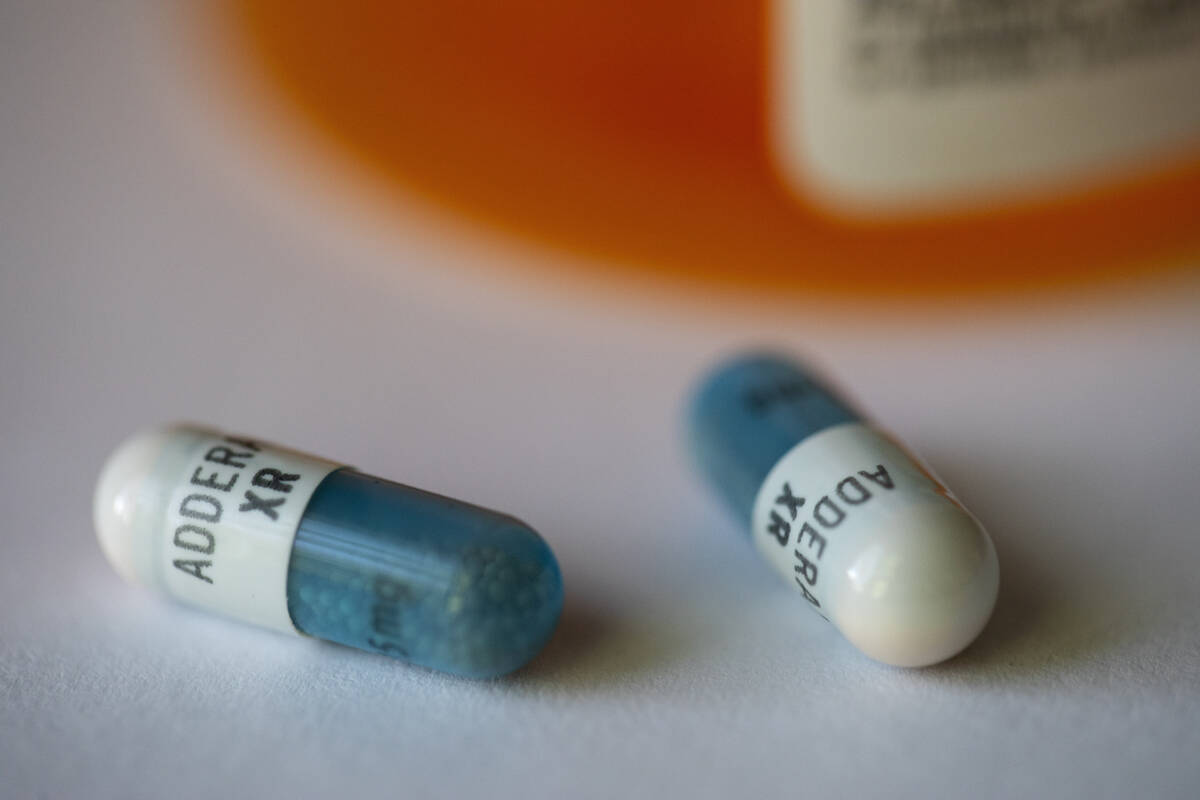What’s behind shortages of prescription drugs?

Shortages of drugs like Adderall are growing in the United States, and experts see no clear path to resolving them. For patients, that can mean treatment delays, medication switches and other hassles filling a prescription.
In recent months, unexpected demand spikes, manufacturing problems and tight ingredient supplies have contributed to shortages that stress patients, parents and doctors. For some drugs, such as stimulants that treat ADHD, several factors fueled a shortage and make it hard to predict when it will end.
Shortages, particularly of generic drugs, have been a long-standing problem. The industry has consolidated and some manufacturers have little incentive to solve shortages because cheap generics generate thin profits.
Here’s a deeper look at the issue:
How many shortages are there?
There were 301 active national drug shortages through this year’s first quarter, according to the University of Utah Drug Information Service. That’s 49 percent higher than the 202 recorded in the first three months of 2018.
Patients don’t feel all drug shortages because doctors may be able to substitute medications or because other parts of the supply system mask the issue, said Stephen Schondelmeyer, a University of Minnesota College of Pharmacy professor.
“But there are more shortages now, and they’re becoming more visible,” he said.
Which drugs are affected?
In the fall, the Food and Drug Administration announced a shortage of the attention deficit/hyperactivity disorder treatment Adderall due to a manufacturing problem. That has persisted and grown at times to include other stimulants that treat the condition.
That situation seems to be improving, said University of Utah Health researcher Erin Fox. But several extended-release doses of the medication, its most popular form, remain in short supply.
The FDA also has tracked a shortage of the diabetes treatment Ozempic, which doctors also prescribe for weight loss. Prescriptions for Ozempic — touted by celebrities and others on social media — have doubled since the summer of 2021 to more than 1.2 million, according to the health data firm IQVIA.
A spokeswoman for Ozempic maker Novo Nordisk says all doses of the drug are now available at pharmacies nationwide.
Last year, a spike in respiratory illnesses forced drugstore chains to temporarily limit purchases of fever-reducing medicines for children. A shortage of the antibiotic amoxicillin also cropped up around then.
Injectable drugs used in hospitals and clinics, such as IV saline and some cancer treatments, are more than twice as likely as tablets or topical treatments to experience a shortage, according to a recent report written by Sen. Gary Peters, D-Mich., chairman of the Senate Committee on Homeland Security and Governmental Affairs.
Why do shortages develop?
Reasons can vary, and a combination of factors fuels many shortages.
The Adderall manufacturing problem hit as more people started taking the drug.
During the pandemic, prescriptions climbed as regulators started allowing doctors to prescribe the drug without first seeing a patient in person. Prescriptions for Adderall and its generic equivalents jumped 20 percent between February 2020 and the end of last year, according to IQVIA.
Adderall supplies face an additional challenge when demand spikes. Federal regulators limit supplies for the drug each year because it is a controlled substance.
Pricing might also be a factor with some drugs.
Ozempic is a diabetes drug. The same medication, semaglutide, is sold under a different brand name, Wegovy, for weight loss. Schondelmeyer noted the per-milligram price for Wegovy can be more than twice as much as Ozempic.
“They’ve been having a run on Ozempic because people don’t want to spend that much on Wegovy,” Schondelmeyer said.
Novo Nordisk spokeswoman Allison Schneider said price was not connected to the shortage. She attributed that to a combination of demand and global supply constraints.
Another factor driving shortages: Medications like Adderall and amoxicillin generate thin profits so companies don’t have an incentive to make and store large amounts in case a shortage develops, Fox said.
“Once a shortage starts with something you make just in time anyway, it’s really hard to resolve it unless all the suppliers are back,” she said.
How are patients affected?
Shortages might lead to treatment delays, which can hurt patients dealing with time-sensitive conditions like cancer.
Doctors are sometimes forced to prescribe alternatives that might not be as effective. That also can lead to medication errors if the doctor is less familiar with the other medication.
Patients also may run out of their prescriptions or be forced to hunt for a pharmacy that has enough supply to refill it.
Future prospects
It’s tough to predict when many shortages may be resolved, partly because measuring demand is hard.
“You can estimate you’re going to increase your production by 10 percent,” said Mike Ganio, senior director of pharmacy practice and quality with the American Society of Health-System Pharmacists, “but is that going to be enough?”
Meanwhile, conditions that could feed future shortages still exist. The Senate report cited an overreliance on foreign sources as a concern. Factories in China and India supply most of the raw materials used in American medicines. Early in the COVID-19 pandemic, India restricted exports of 13 active pharmaceutical ingredients and finished drugs made from those chemicals, to protect its domestic drug supply.
Once shortages develop, they can last years. And it can be tough for patients to get reliable information. Fox said there is no legal requirement for drugmakers to update the public.
The Senate report notes that “no federal agency or private industry partner has end-to-end visibility into the entire U.S. pharmaceutical supply chain.”
Fox says the stimulant shortage has been particularly frustrating. Companies have said they aren’t getting enough raw materials to make the drugs, and the federal government says companies aren’t using what they have.